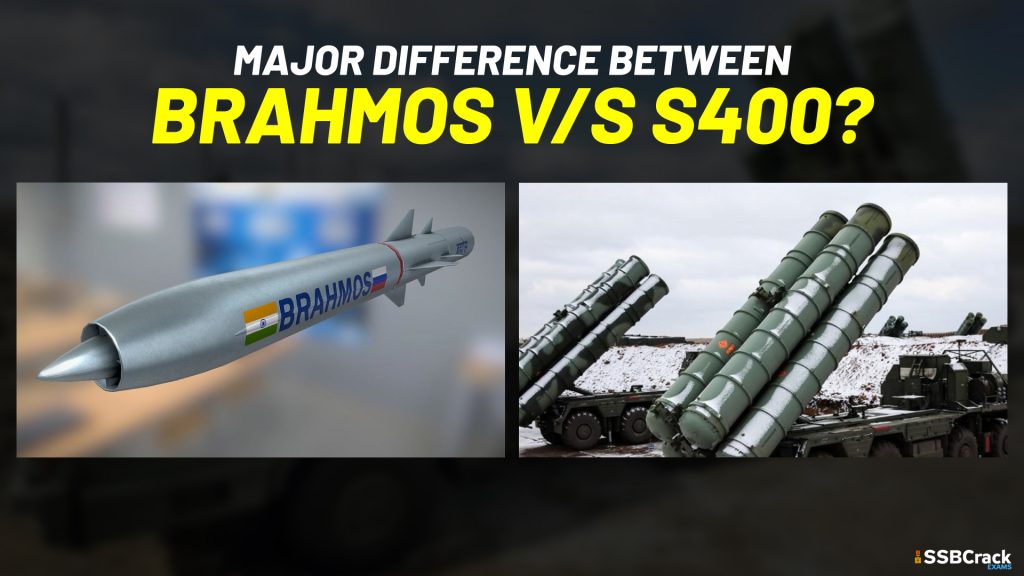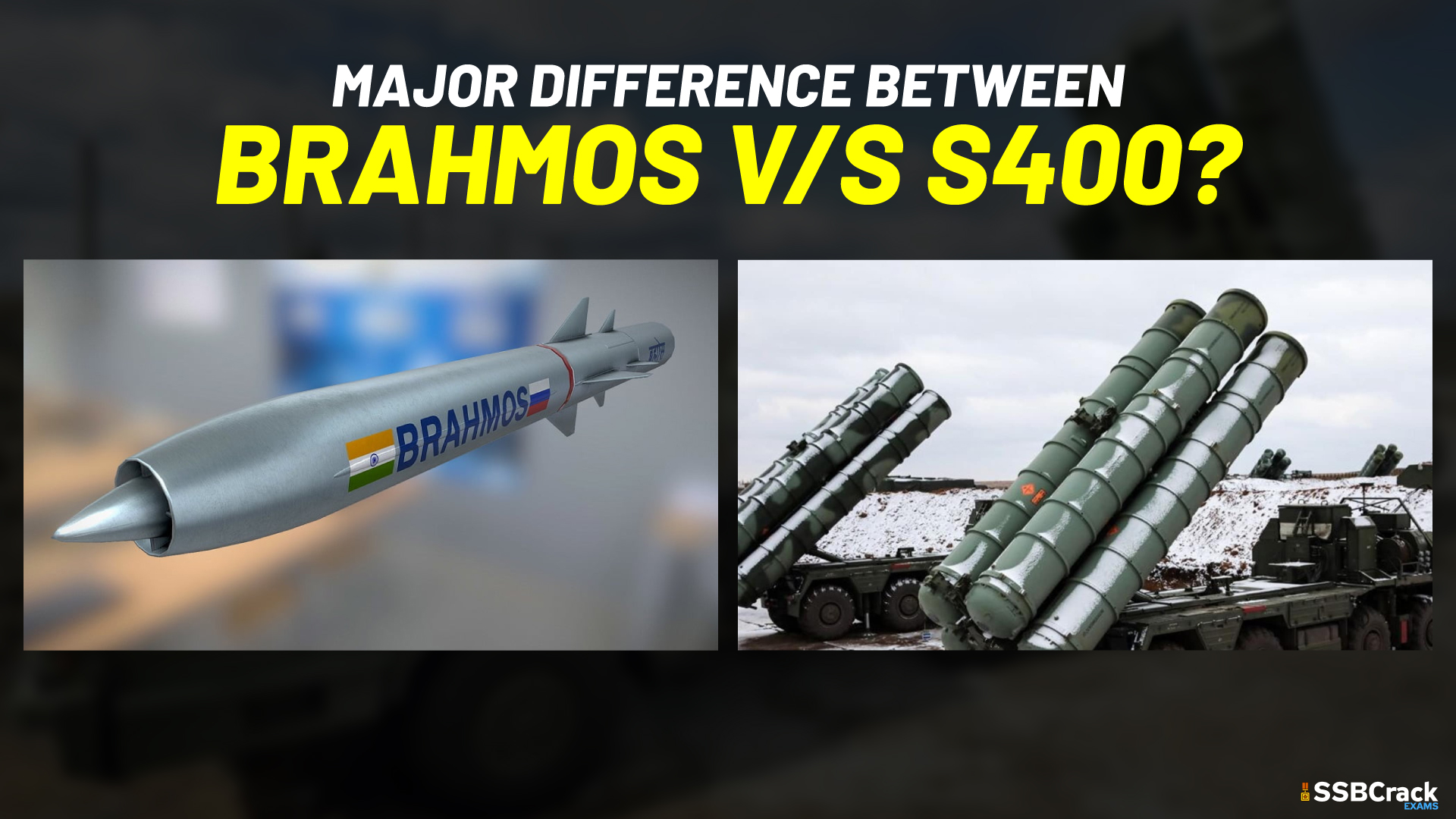The BrahMos is the fastest supersonic cruise missile in the world and the S400 is the most advanced air defense systems. In this article we have tried to explain the difference between the two missiles, their advantages and disadvantages.

The BrahMos is a medium-range missile. It is stealthy and a supersonic cruise missile that can be launched from submarines, ships, land or aircrafts. The Russian Federation’s NPO Mashinostroyeniya and India’s Defence Research and Defence Organisation have come together in a joint-venture to form BrahMos Aerospace.
The name ‘BrahMos’ has been derived from India’s river Brahmaputra and Russia’s river Moskova, taking ‘Brah’ and ‘Mos’ respectively.
The land-launched, air-launched and ship-launched missiles are already in service.
The missile is an anti-ship missile.
The S400 is a surface-to-air missile. It was developed in Russia’s Almaz Central Bureau for Marine Engineering. It has been in service since 2007. The S400 is an anti-ballistic missile.
The key difference between the BrahMos and the S400 is that the S400 is a system. It can monitor an aircraft from a long range and then provide target information. The S400 uses SA20/21 missiles for long range intercepts and 9M96E2 missiles for shorter range (120km) intercepts.
On one side, the BrahMos is very difficult to detect and track. It can cause massive damage on attack, can disintegrate small ships and damage large ships and it is harder to shoot down as it does not have wings.
On the other hand, it only has a 120 km range and cannot take evasive measures on its own to avoid interceptor missiles and follows predetermined path.
BrahMos’ kinetic energy gives it an edge in terms of stealth, hit probability and better target penetration characteristics, making it a deadly weapon.
The Brahmos is not that hard of a target for an S400. The S400’s engagement radar, 92N6E,will find no difficulty to lock on BrahMos target at good range and take it down with the short range 9M96 missiles.
The hardest situation a S400 crew can find themselves in is when the BrahMos comes closing in at about 12 meters, and this is only when the BrahMos is used for Maritime applications.
The S400 also has a target range capacity, speed and follow up range.
If the target is on the opposite end of the missile, it can easily be dismantled. If the target is sideways, the missile can still hit a bullseye because of its radar capacity and calculation.
But, the BrahMos is not a cruise missile or a ballistic missile. In fact, it is the fastest super-sonic missile in existence.
If not targeted with exact precision and super accurate calculation, it is very unlikely to hunt down a BrahMos missile, only because of its unbelievable speed and its own internal self-secured defence system. The BrahMos can detect the anti-missile and can change the root of a target at its own intelligence in a fraction of a second.
All in all, it is close to impossible to counter a BrahMos missile. Only with great precision, accuracy and sheer luck, can one achieve such a task.
A sea skimming supersonic missile will only become feasible for targeting radars at a relatively close range and S400 and its missiles is not what you would want to use for a target closer than 30km or so.
In conclusion, both the BrahMos and the S400 have advantages and disadvantages to them. But any country that has missiles to use, is never at a disadvantage.
The two missiles cannot be compared easily since their mechanisms are very different. They can only be discussed as individual entities, showcasing their pros and cons.
I hope this article was easy to follow and that you gained some valuable insight on the BrahMos and the S400.
Keep reading SSBCrackExams blog posts for more such information!
Also Read:

















